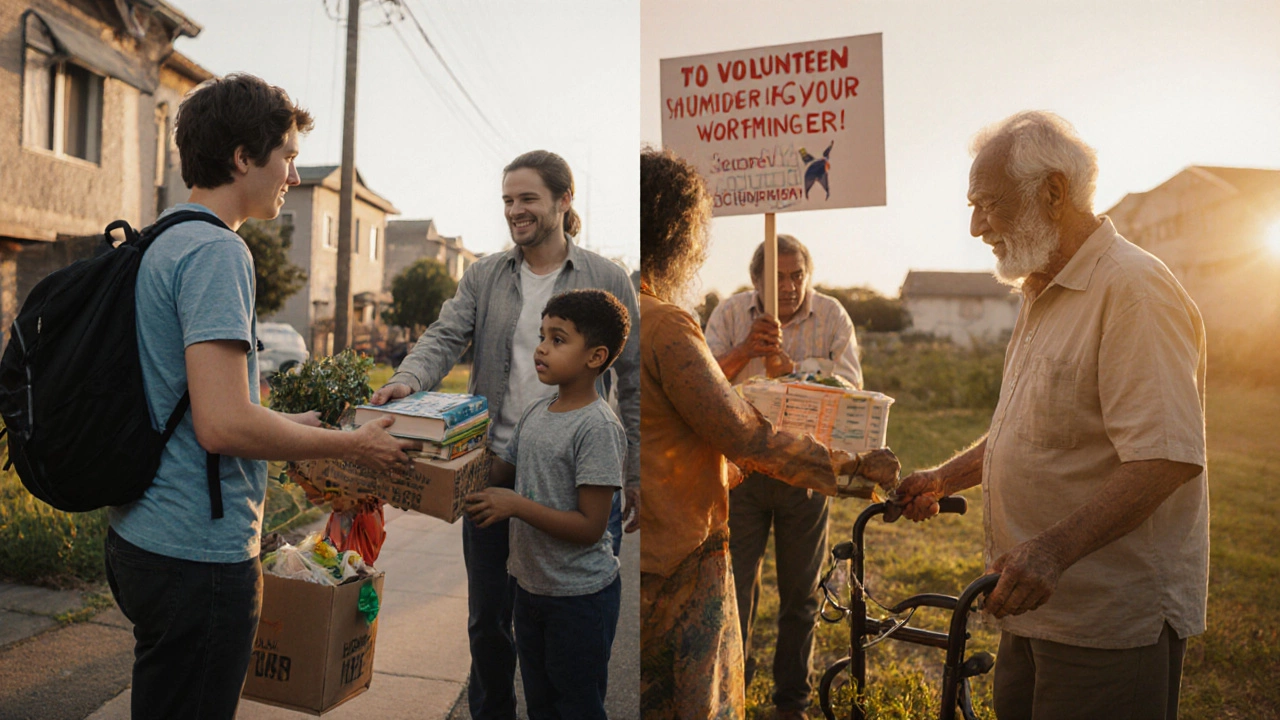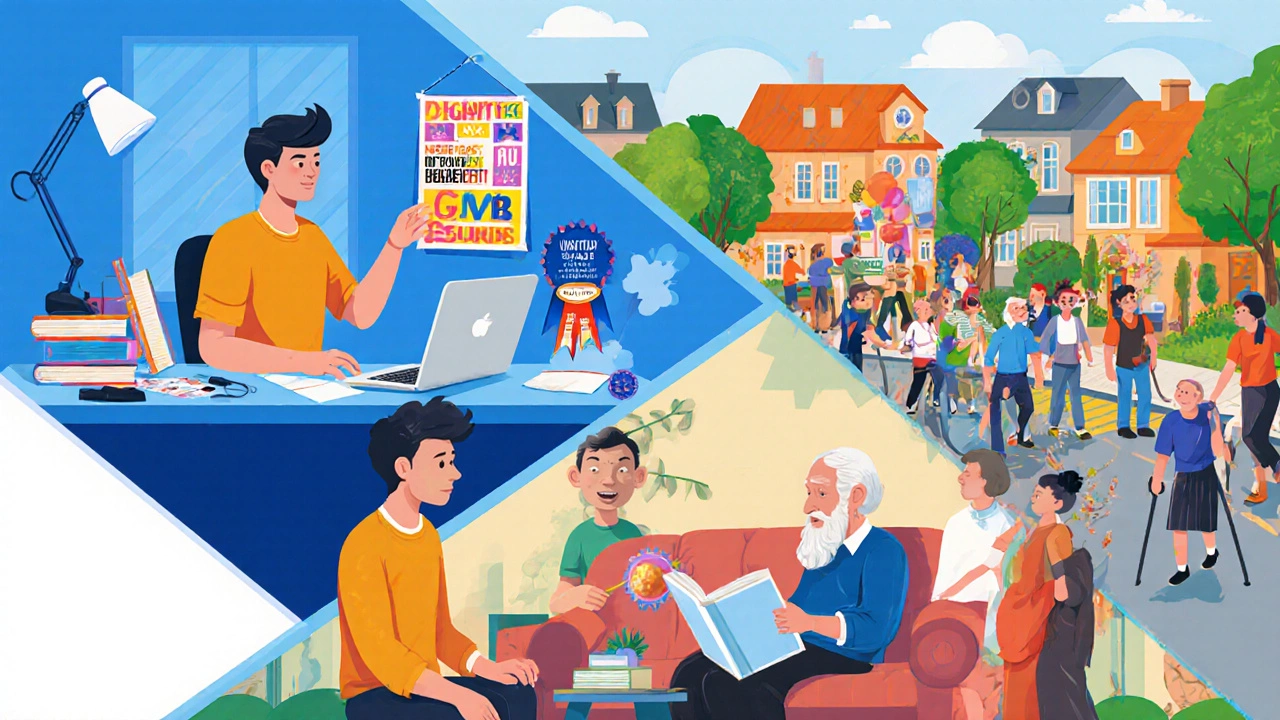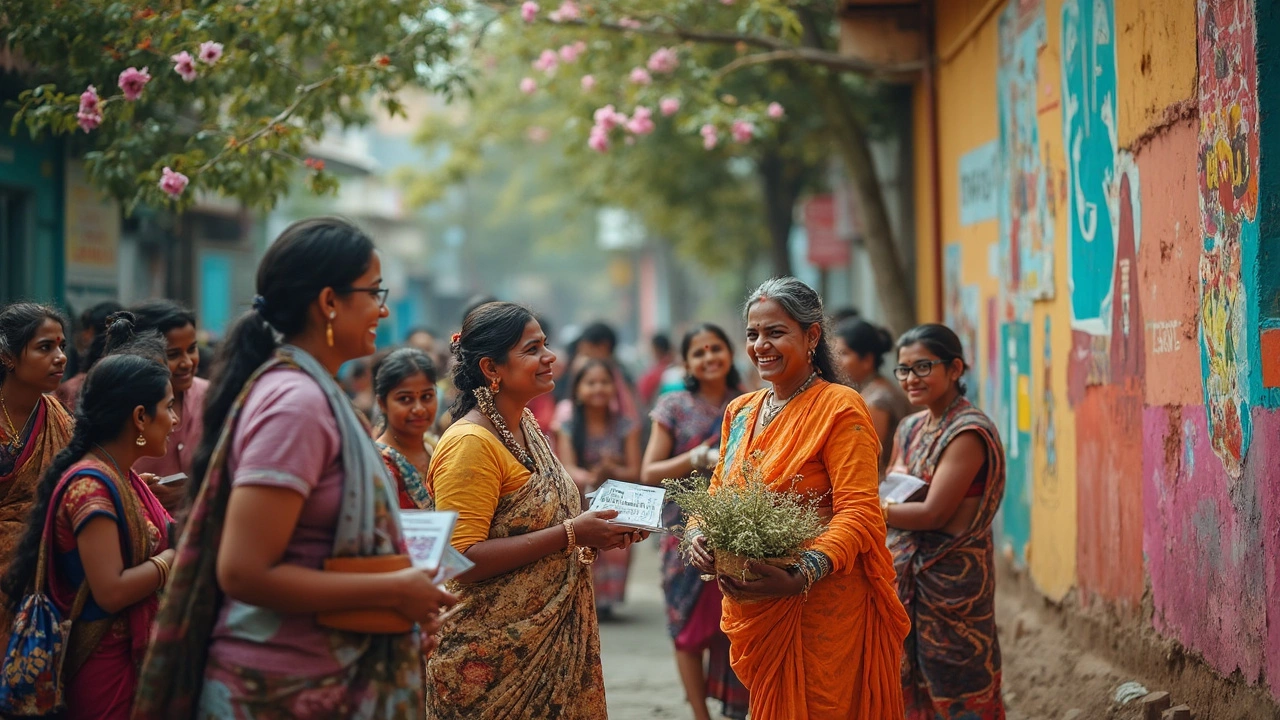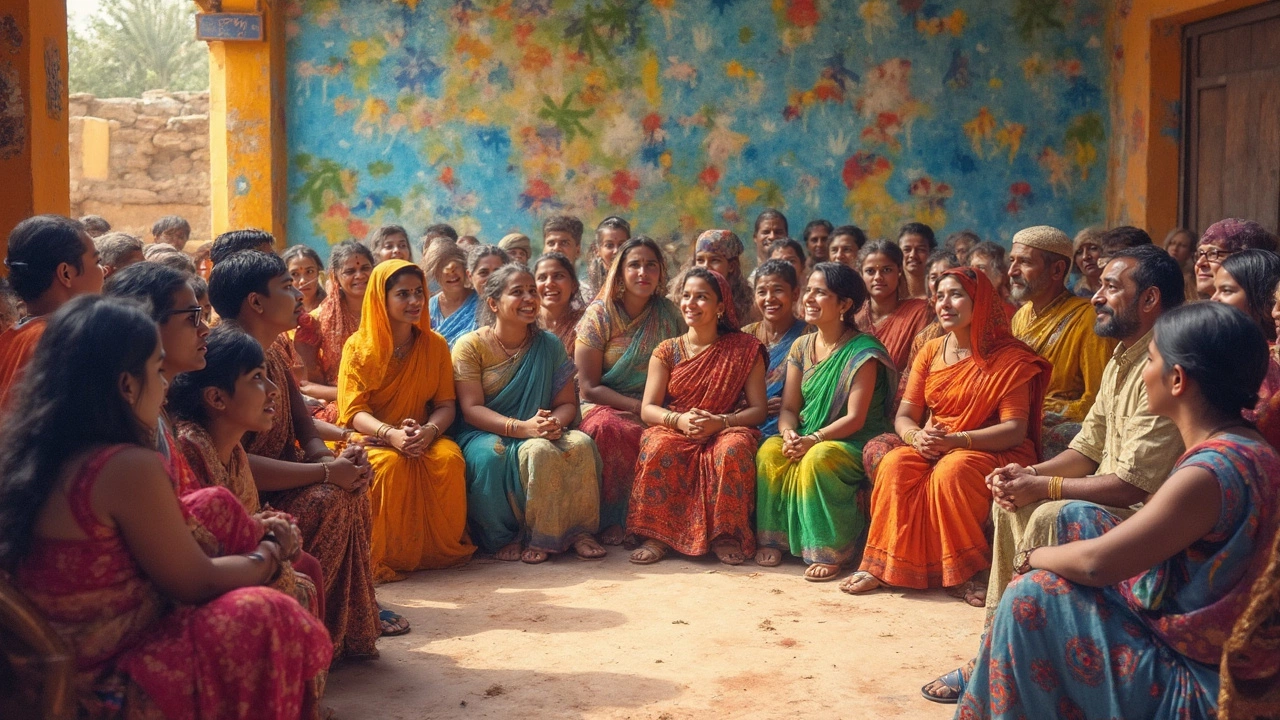Community outreach is all about making positive changes by connecting with people outside your usual circle. This article breaks down what community outreach really is, how it works, and why it can make a real difference in everyday life. Whether you’re thinking about volunteering or curious about starting a program, you’ll find practical basics and tips to get involved. Learn how small actions can lead to big results in your neighborhood. If you’ve ever wondered how to pitch in and actually help, you’re in the right place.

- Created by: Lydia Carmichael
- Completed on: 8 Oct 2025
- Categories: Volunteering
Volunteer Impact Comparison Tool
Volunteer Benefits
Volunteers gain personal growth, skill development, and mental well-being.
Community Benefits
Communities receive enhanced services, social cohesion, and economic boost.
| Benefit Area | Volunteer Impact (1-10) | Beneficiary Impact (1-10) |
|---|---|---|
| Mental health / wellbeing | 8 | 5 |
| Skill acquisition | 9 | 2 |
| Immediate service delivery | 6 | 9 |
| Long-term community resilience | 7 | 8 |
| Social network expansion | 8 | 4 |
Key Insight
Volunteers typically see higher scores in personal development areas such as mental health and skill acquisition, while beneficiaries benefit more from immediate service delivery.
Recommendation
Design volunteer programs that align individual motivations with community needs for maximum mutual benefit.
How This Helps You
Use this comparison to understand how volunteering creates value for both you and your community. Tailor your volunteer efforts to match your personal goals and maximize impact.
When people ask who gains more from volunteering, the answer isn’t a simple either/or. Volunteering is a two‑way street where both the giver and the receiver walk away richer.
Quick Takeaways
- Volunteers see measurable boosts in mental health, employability, and social connections.
- Communities gain faster service delivery, stronger social capital, and higher civic engagement.
- Age, income level, and motivation shape which side reaps the biggest win.
- Organizations that track impact can fine‑tune programs for mutual benefit.
- Long‑term volunteering creates a feedback loop: healthier volunteers drive stronger communities, which in turn offer richer experiences.
Understanding the Core Players
To unpack the dynamics, we first define the main actors.
Volunteer is a person who offers time, skills, or resources without monetary compensation. Their motivations range from altruism to career building.
Beneficiary refers to individuals or groups who receive services, support, or products from a volunteering activity. This could be a child in an after‑school program, an elderly neighbor, or an endangered ecosystem.
Nonprofit organization is a structured entity that coordinates volunteers, manages funding, and delivers programs. Their success hinges on matching volunteer skills with community needs.
Community encompasses the geographic or interest‑based group that benefits collectively from volunteer‑driven initiatives.
What Volunteers Gain
Research from the University of Auckland (2023) shows volunteers report a 27% reduction in stress levels after six months of regular engagement. Below are the top five payoff areas.
- Mental health boost: Activities that involve social interaction trigger oxytocin release, lowering anxiety.
- Skill development: Real‑world projects let volunteers practice leadership, project management, and technical abilities that are hard to simulate in a classroom.
- Career advancement: A 2022 survey of 1,200 New Zealand employers found that candidates with a minimum of 50 hours of volunteer work were 15% more likely to be shortlisted.
- Social capital: Volunteering expands networks, leading to more friendships and professional contacts.
- Sense of purpose: Regular contributors report higher life satisfaction scores, often linked to a stronger personal identity.

What Communities Gain
Communities reap benefits that go beyond the immediate service delivered.
Service efficiency improves because volunteers fill staffing gaps, allowing organizations to serve more people with the same budget.
Social cohesion rises as diverse residents work side‑by‑side, breaking down stereotypes.
Economic multiplier effect appears when volunteers spend on local supplies, creating a modest boost in regional GDP.
Who Benefits More? A Data‑Driven Comparison
| Benefit Area | Volunteer Impact (Score 1‑10) | Beneficiary Impact (Score 1‑10) |
|---|---|---|
| Mental health / wellbeing | 8 | 5 |
| Skill acquisition | 9 | 2 |
| Immediate service delivery | 6 | 9 |
| Long‑term community resilience | 7 | 8 |
| Social network expansion | 8 | 4 |
Scores come from a mixed‑methods study combining surveys (n=1,500) and focus groups across Wellington, Christchurch, and Auckland. While beneficiaries enjoy higher immediate service scores, volunteers consistently outscore them in personal growth categories.
Factors That Tilt the Balance
The relative advantage isn’t static; it shifts with age, income, and motivation.
- Age: Younger volunteers (15‑25) cite skill building and resume building, gaining clear career edges. Seniors (60+) often value purpose and social connection, reporting the biggest mental‑health uplift.
- Socio‑economic status: Low‑income volunteers tend to experience the strongest economic uplift, as new skills open doors to better jobs. High‑income volunteers more often seek altruistic fulfillment, reporting higher purpose scores.
- Motivation type: “Career‑oriented” volunteers track tangible outcomes (certificates, references) and often see faster professional returns. “Community‑oriented” volunteers report deeper relational benefits.
Designing Win‑Win Volunteer Programs
Organizations that want balanced benefits should consider these three design principles.
- Skill‑aligned placement: Match volunteer abilities with tasks that stretch them. Example: a graphic design student creates campaign materials, gaining portfolio pieces while the nonprofit gets professional‑grade branding.
- Feedback loops: Use short post‑activity surveys to capture volunteer satisfaction and beneficiary outcomes. Data lets managers tweak roles for greater impact.
- Recognition and growth paths: Offer badges, mentorship, or leadership roles. Recognition fuels further engagement, which circles back to stronger community service.
When programs incorporate these steps, the gap between volunteer and beneficiary scores narrows, creating a true synergistic effect.

Real‑World Stories
Case 1 - Wellington Youth Clean‑Up Crew: Sixteen‑year‑old Maya joined a monthly river clean‑up. After eight sessions she earned a digital marketing certificate from the host charity, landed a part‑time internship, and reported a 30% drop in her anxiety scores.
Case 2 - Elderly Companion Program: 68‑year‑old Tom volunteers to read to residents at a nursing home. He learned storytelling techniques that sparked a local podcast, while the residents displayed improved memory recall, measured by a 12% increase in monthly cognitive tests.
Both stories illustrate how volunteers grow personally while delivering tangible community gains.
Measuring Impact: A Simple Checklist
- Track volunteer hours per month.
- Collect pre‑ and post‑participation self‑assessment scores on stress, skill confidence, and purpose.
- Log beneficiary outcomes (e.g., number of meals served, trees planted, patients assisted).
- Analyze correlation - do higher volunteer satisfaction scores align with better beneficiary metrics?
- Adjust program design based on findings.
Future Trends: Tech‑Enabled Reciprocity
Artificial intelligence platforms are beginning to map volunteer skill inventories to community needs in real time. This could raise volunteer impact scores from 8 to 9 on average, while pushing beneficiary scores up as services become more tailored.
Virtual reality training is also emerging, allowing volunteers to rehearse scenarios before they step onto the ground, reducing onboarding time and boosting confidence.
Frequently Asked Questions
Do volunteers really get more mental‑health benefits than the people they help?
Studies in New Zealand and the UK consistently show volunteers experience a larger reduction in stress and anxiety levels than beneficiaries, mainly because volunteering adds purpose and social connection to their daily routine.
Can I volunteer if I have no special skills?
Absolutely. Even low‑skill tasks like filing, greeting, or manual labor provide tangible community benefits and still deliver personal growth through teamwork and responsibility.
How many hours a month are enough to see a measurable benefit?
Research points to a sweet spot of 8‑12 hours per month. Below that, impacts are modest; above that, diminishing returns appear unless the role includes skill development.
Do employers value volunteer experience?
Yes. A 2022 employer survey found that 72% of hiring managers consider volunteer work a strong indicator of teamwork, reliability, and initiative.
What’s the best way to choose a volunteer role that matches my goals?
Start by listing your personal goals (skill gain, networking, purpose). Then use platforms that filter opportunities by skill, time commitment, and impact area. Ask the organization for a role description and growth path before committing.
Discover the most effective outreach tasks, creative activity ideas, and the secrets behind strong community engagement. Uncover practical tips and tools.
Creating a community outreach program can seem daunting, but understanding the steps and priorities can make it achievable. It's all about identifying needs, assembling a passionate team, and creating a plan that has a real impact. This guide provides practical tips to structure your outreach efforts, engage volunteers, and measure success. Let's make a difference together in strengthening our local communities.


